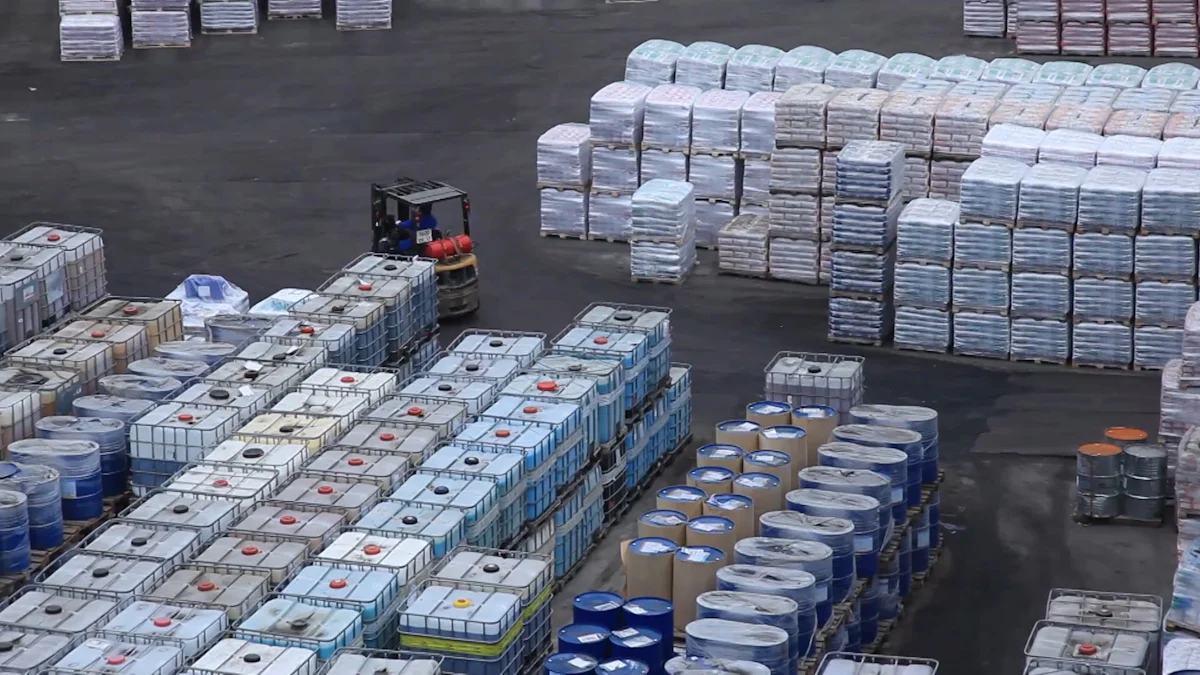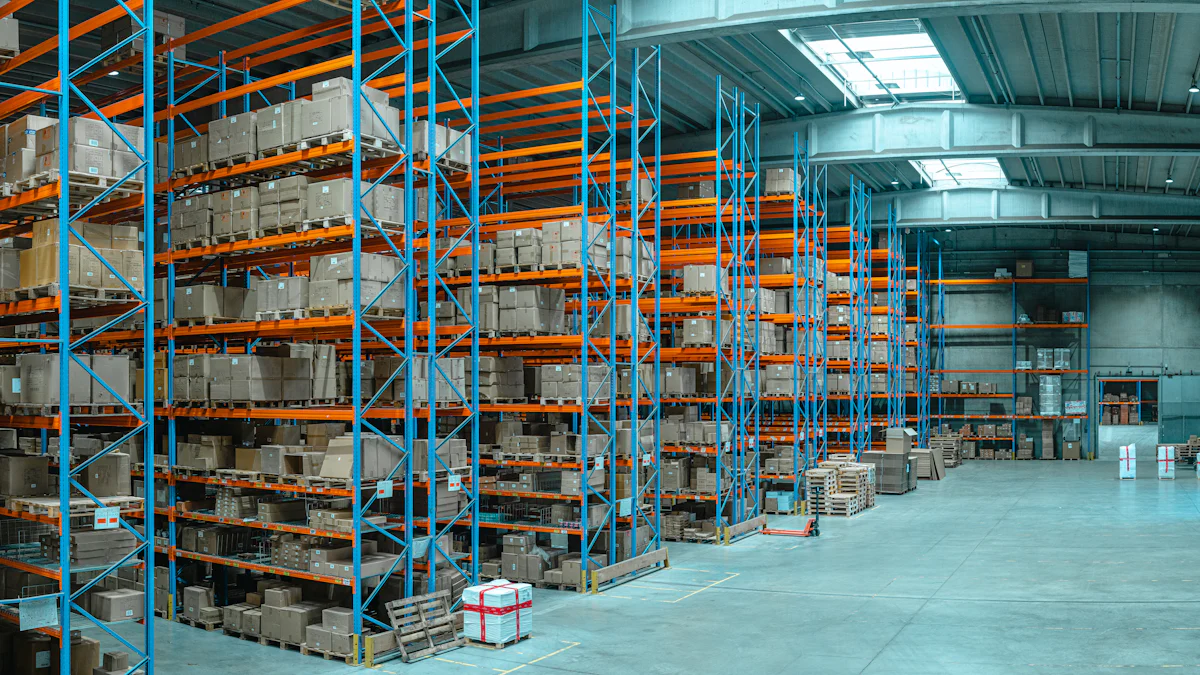

Maintaining the cold chain is crucial for preserving the integrity of temperature-sensitive products. Cold Chain Monitoring plays a vital role in ensuring these products remain within specified temperature ranges throughout transportation and storage. Industries such as pharmaceuticals, food, and chemicals rely heavily on this process to maintain product quality and safety. An estimated 20% of temperature-sensitive products suffer damage during transit due to supply chain disruptions. Effective monitoring systems help mitigate these risks, ensuring that products reach consumers in optimal condition.
Understanding Cold Chain Monitoring
Definition and Purpose of Cold Chain Monitoring
Cold Chain Monitoring involves the systematic observation of temperature-sensitive products during transportation and storage. The primary objective is to maintain product quality and safety. Temperature fluctuations can compromise the integrity of pharmaceuticals, food, and chemicals. Monitoring systems ensure that these products remain within specified temperature ranges. This process prevents spoilage and maintains efficacy.
Regulatory compliance represents another critical aspect of Cold Chain Monitoring. Various industries must adhere to stringent guidelines set by regulatory bodies. These guidelines mandate specific temperature conditions for storage and transportation. Compliance ensures that products meet safety standards and avoid legal repercussions.
Key Components of Cold Chain Monitoring
Temperature sensors form the backbone of Cold Chain Monitoring systems. These devices measure and record the temperature of products in real-time. Sensors provide accurate data that helps in maintaining optimal conditions. Advanced sensors offer high precision and reliability.
Data loggers play a crucial role in tracking temperature variations over time. These devices store temperature data for analysis. Data loggers help identify trends and patterns in temperature fluctuations. This information aids in making informed decisions about product handling.
Real-time tracking systems enhance the effectiveness of Cold Chain Monitoring. These systems offer continuous visibility into the location and condition of products. Real-time data allows for immediate action in case of deviations from set parameters. Companies like Overhaul leverage real-time global visibility to manage risks proactively. This approach ensures reliable cold chain logistics.
Technologies in Cold Chain Monitoring

IoT and Smart Sensors
IoT technology revolutionizes Cold Chain Monitoring by providing real-time data. This technology allows for continuous tracking of temperature-sensitive products. IoT devices ensure that products remain within specified temperature ranges. This capability reduces the risk of spoilage and maintains product quality.
Smart sensors enhance Cold Chain Monitoring by offering precise measurements. These sensors detect temperature changes instantly. The sensors send alerts to stakeholders, enabling immediate corrective actions. Overhaul uses smart sensors to empower clients in protecting valuable cargo. This approach maintains supply chain integrity across various sectors.
Blockchain for Data Integrity
Blockchain technology ensures data security in Cold Chain Monitoring. This technology creates an immutable record of temperature data. Each transaction in the blockchain verifies and timestamps data entries. This process prevents unauthorized alterations and enhances trust.
Case Studies demonstrate blockchain's effectiveness in Cold Chain Monitoring. Cornerstone Logistics uses blockchain to provide full visibility during transit. This approach benefits humanitarian aid organizations by ensuring timely and safe delivery. Blockchain technology strengthens the reliability of cold chain logistics.
Cloud-based Solutions
Cloud-based solutions offer significant advantages for Cold Chain Monitoring. These solutions provide scalable storage for vast amounts of temperature data. Cloud platforms facilitate easy access and sharing of information among stakeholders. This accessibility improves decision-making and response times.
Integration with existing systems enhances the efficiency of Cold Chain Monitoring. Cloud-based solutions seamlessly connect with current infrastructure. This integration streamlines operations and reduces implementation costs. Companies benefit from improved data management and operational efficiency.
Challenges and Solutions of Cold Chain Monitoring
Common Challenges of Cold Chain Monitoring
Cold Chain Monitoring faces several challenges that can impact the effectiveness of temperature management. Equipment malfunctions represent a significant challenge. Faulty equipment can lead to temperature deviations, compromising product integrity. Regular maintenance and timely replacement of malfunctioning devices are essential to mitigate this risk.
Data accuracy issues also pose a threat to effective Cold Chain Monitoring. Inaccurate data can result from sensor errors or data transmission failures. This inaccuracy can lead to incorrect assessments of product conditions. Implementing robust data validation protocols helps ensure the reliability of temperature data.
Innovative Solutions of Cold Chain Monitoring
Innovative solutions have emerged to address these challenges in Cold Chain Monitoring. Predictive analytics offers a powerful tool for anticipating potential disruptions. By analyzing historical data, predictive models can forecast equipment failures or temperature fluctuations. This proactive approach allows for preventive measures, reducing the likelihood of product spoilage.
Advanced alert systems enhance the responsiveness of Cold Chain Monitoring. These systems provide real-time notifications of any deviations from set parameters. Immediate alerts enable swift corrective actions, minimizing the impact of temperature excursions. Companies like Overhaul leverage advanced alert systems to maintain the integrity of cold chain logistics.
Modern Cold Chain Monitoring solutions surpass traditional methods in several ways. Traditional solutions may lack advanced temperature control and GDP compliance. Modern solutions offer enhanced security and rapid IoT deployment. These advancements contribute to more reliable and efficient Cold Chain Monitoring processes.
Impact on Industries of Cold Chain Monitoring

Pharmaceutical Industry of Cold Chain Monitoring
Ensuring vaccine efficacy
Cold Chain Monitoring plays a crucial role in maintaining the efficacy of vaccines. Temperature-sensitive vaccines require strict adherence to specific temperature ranges. Monitoring systems ensure that vaccines remain potent and effective. The pharmaceutical industry relies on precise temperature control to prevent vaccine degradation. Cold Chain Monitoring provides the necessary oversight to maintain vaccine quality.
Case study: COVID-19 vaccine distribution
The distribution of COVID-19 vaccines highlighted the importance of Cold Chain Monitoring. Vaccines required ultra-cold storage conditions during transportation and storage. Monitoring systems ensured compliance with these stringent requirements. Real-time data allowed for immediate corrective actions when deviations occurred. The success of the COVID-19 vaccine rollout depended on effective Cold Chain Monitoring.
Food Industry of Cold Chain Monitoring
Reducing food waste
Cold Chain Monitoring significantly reduces food waste in the supply chain. Temperature fluctuations can lead to spoilage and loss of perishable goods. Monitoring systems provide continuous oversight to prevent such losses. The food industry benefits from reduced waste and increased profitability. Cold Chain Monitoring ensures that products reach consumers in optimal condition.
Enhancing food safety
Food safety remains a top priority for the food industry. Cold Chain Monitoring enhances safety by maintaining proper storage conditions. Temperature control prevents the growth of harmful bacteria and pathogens. Monitoring systems provide real-time alerts for any deviations from set parameters. The food industry relies on Cold Chain Monitoring to protect consumer health.
Chemical Industry of Cold Chain Monitoring
Maintaining chemical stability
The chemical industry requires precise temperature control to maintain product stability. Cold Chain Monitoring ensures that chemicals remain within specified temperature ranges. Temperature fluctuations can alter chemical properties and compromise safety. Monitoring systems provide the necessary oversight to prevent such occurrences. The chemical industry benefits from enhanced product integrity and safety.
Compliance with safety standards
Compliance with safety standards is essential in the chemical industry. Cold Chain Monitoring ensures adherence to regulatory guidelines. Monitoring systems provide accurate data for audits and inspections. The chemical industry relies on this data to demonstrate compliance. Cold Chain Monitoring supports the industry's commitment to safety and quality.
Cold chain monitoring remains vital for maintaining the integrity of temperature-sensitive products. Effective monitoring ensures optimal conditions throughout the supply chain. Industries like pharmaceuticals, healthcare, and food benefit significantly from this process. Future trends indicate a rise in advanced technologies such as IoT and blockchain. These innovations promise enhanced data security and real-time visibility. The impact across industries underscores the importance of reliable cold chain logistics. Advanced solutions safeguard patient safety and mitigate financial losses. Comprehensive monitoring features continue to support quality control and proactive risk management.
FAQ
Cold Chain Monitoring involves tracking temperature-sensitive products during transportation and storage. This process ensures that products remain within specified temperature ranges to maintain quality and safety. Industries such as pharmaceuticals, food, and chemicals rely on this monitoring to prevent spoilage and degradation.
Cold Chain Monitoring is crucial for preserving the integrity of temperature-sensitive goods. Temperature fluctuations can compromise product quality and safety. Monitoring systems help mitigate these risks by providing real-time data and alerts. This ensures that products reach consumers in optimal condition.
Cold Chain Monitoring utilizes various technologies, including IoT devices, smart sensors, blockchain, and cloud-based solutions. IoT devices provide real-time data on temperature conditions. Smart sensors offer precise measurements and instant alerts. Blockchain technology ensures data security and integrity. Cloud-based solutions facilitate scalable storage and easy access to data.
Cold Chain Monitoring faces challenges such as equipment malfunctions and data accuracy issues. Faulty equipment can lead to temperature deviations, compromising product integrity. Inaccurate data from sensor errors or transmission failures can result in incorrect assessments. Regular maintenance and robust data validation protocols help address these challenges.
Companies ensure compliance by adhering to guidelines set by regulatory bodies. These guidelines mandate specific temperature conditions for storage and transportation. Monitoring systems provide accurate data for audits and inspections. Compliance ensures that products meet safety standards and avoid legal repercussions.
Innovative solutions include predictive analytics and advanced alert systems. Predictive analytics uses historical data to forecast potential disruptions. This proactive approach allows for preventive measures. Advanced alert systems provide real-time notifications of deviations, enabling swift corrective actions.
Cold Chain Monitoring plays a vital role in maintaining the efficacy of pharmaceuticals, especially vaccines. Monitoring systems ensure that vaccines remain potent and effective by adhering to strict temperature requirements. The pharmaceutical industry relies on precise temperature control to prevent degradation.
Cold Chain Monitoring reduces food waste by preventing spoilage due to temperature fluctuations. Monitoring systems provide continuous oversight, ensuring products reach consumers in optimal condition. The food industry benefits from increased profitability and enhanced food safety through proper temperature control.
Cold Chain Monitoring ensures the stability of chemicals by maintaining precise temperature control. Temperature fluctuations can alter chemical properties and compromise safety. Monitoring systems provide the necessary oversight to prevent such occurrences, ensuring compliance with safety standards.
Continue Reading About Cold Chain Monitoring
10 Game-Changing Project Management Reporting Types!
Unlock project success with 10 must-know reporting types! Track progress, manage risks, and stay on budget like a pro.
Lewis
Mar 03, 2025
2025 Best Data Integration Solutions and Selection Guide
Explore top data integration solutions for 2025, enhancing data management and operational efficiency with leading platforms like Fivetran and Talend.
Howard
Dec 19, 2024
2025's Best Data Validation Tools: Top 7 Picks
Explore the top 7 data validation tools of 2025, featuring key features, benefits, user experiences, and pricing to ensure accurate and reliable data.
Howard
Aug 09, 2024
2025 Data Pipeline Examples: Learn & Master with Ease!
Unlock 2025’s Data Pipeline Examples! Discover how they automate data flow, boost quality, and deliver real-time insights for smarter business decisions.
Howard
Feb 24, 2025
Best Data Integration Platforms to Use in 2025
Explore the best data integration platforms for 2025, including cloud-based, on-premises, and hybrid solutions. Learn about key features, benefits, and top players.
Howard
Jun 20, 2024
Creating an Excel Dashboard: Easy Steps for Beginners
Learn to create Excel dashboards with templates for easy data visualization and analysis. Perfect for beginners seeking efficient insights.
Lewis
Nov 05, 2024


